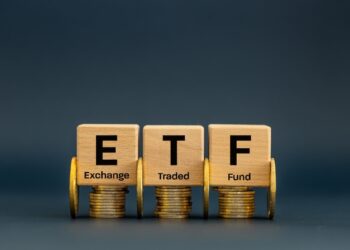In the life of the modern money manager, achieving balance seems to be an almost never-ending journey, full of unexpected twist and turns.
In today’s markets, finding this balance is increasingly important, particularly for those who are on the cusp of retirement. So, what is to be done?
Investors are experiencing a regime change in fixed income markets. Taking a step back a couple of years to when central bank policy was pushing down inflation and bond rates, fixed income was
seen as a diversifier. In reality, it was anything but.
It may seem a throwaway line but with government bond rates at such low levels, investing in those fixed income assets was like paying for return-free risk. At some stage, prices would start
adjusting, but what has been noteworthy throughout the first two thirds of this year is that both bonds and equities have been performing poorly.
This is particularly important for those advising on multi-asset portfolios because all the diversification rules that professional investors learned at university and have relied on for years, were as good as dead.
With markets adjusting fairly aggressively, financial advisers are now faced with an interesting question. Are things back to normal, and can fixed income and government bonds play their traditional role and protect the client’s portfolio?
Twists and turns
In answering, advisers should take a step back and consider the volatility currently facing the market, and what’s led us here. A number of drivers have kept investors up late at night, not least of which the post-pandemic economic recovery coinciding with bottlenecks in supply chains, leading to higher inflationary pressures.
These factors, overlaid with the Russian invasion of Ukraine, have led to significant energy and food shortages, throwing yet another curve into the road ahead of investors. As the world moves into the Northern Hemisphere’s winter, these economic challenges will have further to play out, alongside Europe’s severe recent drought.
These issues might seem a mile away from home for Australian investors, but these factors do have an impact on outcomes, particularly for the likes of retirees.
With fixed income yields so low recently, not only have bonds not behaved defensively, they also haven’t provided much income. This has forced investors – such as retirees and pre-retirees – up the risk spectrum in order to seek that much needed income and satisfy their liquidity requirements, for example, increasing allocations to higher dividend producing shares.
The challenge for retirees in navigating the need for income is that it is critical they are not forced to liquidate equities in a volatile market and in the end crystallising losses with limited time to regain what has vanished. We often refer to this phenomenon as sequencing risk, and ultimately it damages the sum of money people are left with at retirement.
The value of experience
For advisers, it is critical that they guide their clients away from these risks. While it is too soon yet to say with any clarity that investors should expect fixed income to assume its modus operandi and protect their portfolio from this volatility, with income from bonds becoming more attractive, that dynamic is shifting.
To that end, many advisers are making use of bucket approaches, whereby their retirement-age clients set aside a certain amount in very liquid assets – such as short-term bonds and cash – for a period of one to two years, which can be called on as needed, while the rest of their retirement savings remain in risk assets.
By doing so, advisers are ensuring their clients can push beyond sequencing risk and participate in market recoveries.
Where to from here?
In the short term, markets are set to maintain volatility as investors adjust to a different set of inflationary scenarios than they have witnessed for the best part of 30 years. To have invested in a bond bear market, an adviser would have to be in their mid-to-late 50s. The last time we witnessed anything similar of significant materiality was in the early 1990s.
Ultimately, experienced advisers will be best positioned to find the right balance between risk assets and liquidity to shepherd their clients through this period of instability. It is a long and windy road, but those who have seen it before will know the way.
Jonathan Armitage is chief investment officer at Colonial First State.





